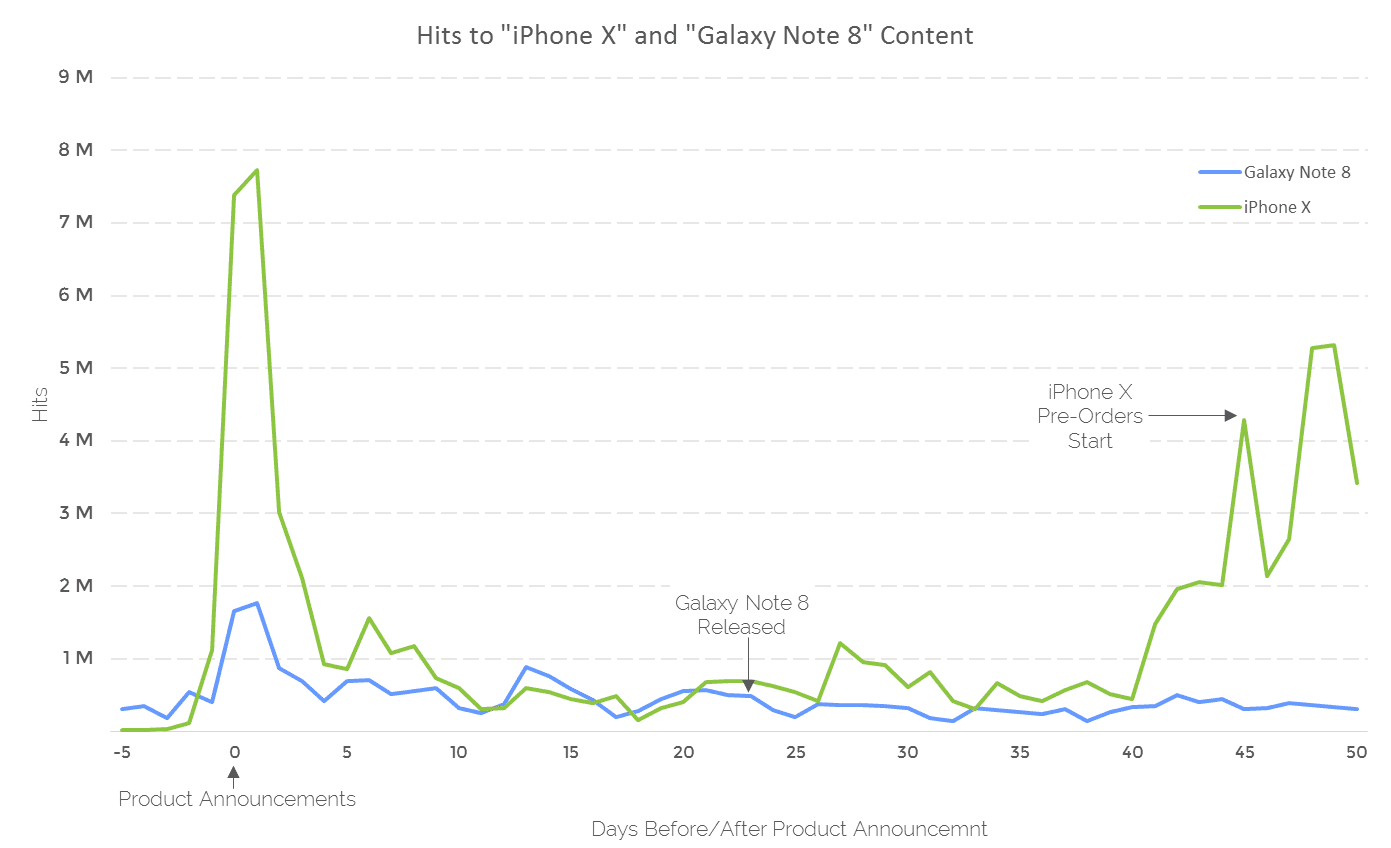Resonate’s Senior Analytics Manager, Kevin Shea, takes a look at the data behind the highly anticipated iPhone X release to see how it’s really stacking up in the market compared to its Samsung rival.
In late August and early September Samsung and Apple announced new versions of their flagship mobile devices, the Samsung Galaxy Note 8 and the Apple iPhone X. With Samsung reporting record sales numbers for the Galaxy Note 8 and Apple banking on the iPhone X to make up for disappointing sales figures for the overlooked iPhone 8, the two rivals are set for a head-to-head showdown.
But talk is cheap, so we wanted to do our own investigating and see how these two phones were really stacking up in the marketplace and learn if we could unlock who will come out on top.
The Buzz
There’s been no shortage of media flurry promoting both launches. And while Apple and Samsung are both touting marketing success, we wanted to take a look at how consumers were actually engaging with Galaxy Note 8 and iPhone X content online in the weeks before and after their product launches.

Without a doubt, the Apple-hype machine was and continues to be alive and well. Views of iPhone X-related content on the day of the launch dwarfed the Galaxy Note 8 and continued to be higher even after the Galaxy was publically available. After a brief lull, iPhone X engagement surged again as the pre-order finally began 45 days after Apple’s product announcement. However, the claims of record sales from Samsung, despite the consistently low level of engagement online, may speak to an incredibly loyal Andriod following.
The Buyers
At a high level, the iPhone X may be generating significantly more interest than its competitor, but that’s only half of the story. Who are all of these potential iPhone X and Galaxy buyers (who clearly aren’t scared away by a $1,000 price tag)? And how do they compare to each other?
Well, not too surprisingly, both phone shoppers skew toward a younger male demographic. Galaxy Note 8 and iPhone X shoppers are both approximately 75% male, with 60% of shoppers between 25 and 44 years old. While both groups trend to be higher-income individuals, it’s worth noting that the Galaxy Note 8 attracted a much greater proportion of shoppers making less than $50K per year.

Now demographics are great to give us a baseline understanding of consumers, but here at Resonate we like to dive a little bit deeper and look at the personalities and drivers of these buyers. From a personal motivations and purchase perspective, iPhone X and Galaxy Note 8 buyers showed some differences in four main areas:

When it comes to choosing their next phone, iPhone X and Galaxy Note 8 customers share the same top three considerations:

However, iPhone X shoppers highly rate “Cross-Device Content Sharing,” indicating they may already own or plan to purchase other Apple devices while Galaxy Note 8 shoppers are more concerned with hardware features like “Camera Quality” and “Storage & Memory” options. What makes things more interesting in this rival showdown is that the extended iPhone X ad touts many of these new hardware features which could attract greater numbers of Android shoppers than a typical iPhone release.
The Verdict Is Still Out
The iPhone X did generate considerable buzz in the immediate days following its announcement and in the last two weeks as pre-orders started and the doors burst open this morning to long lines of waiting customers. Given that the two rival phones have similar target audiences, there still remains a strong potential to poach customers. But we’ll all find out over the next few weeks if the long wait between announcement and release date dampened expected sales for Apple, or if buzz and dollars equate, giving Apple its continued reign in the smartphone market.



